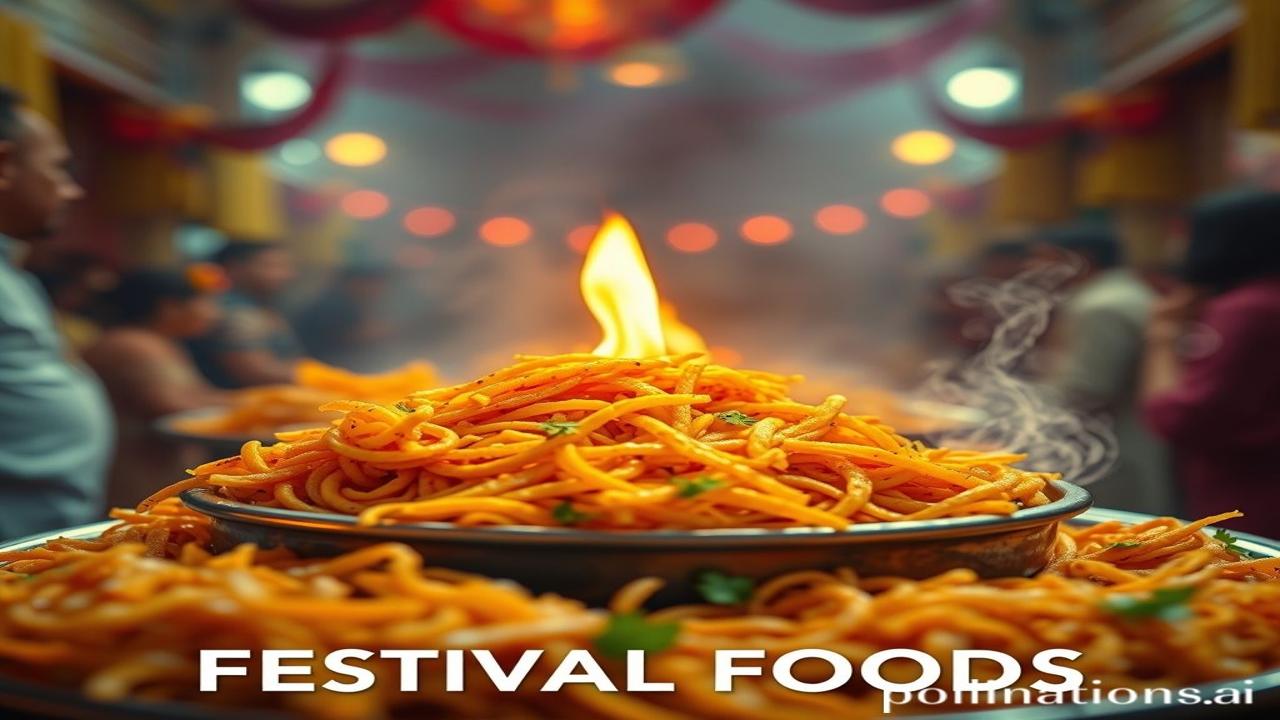Kabhi Socha Hai, Utsav Mein Khane Ki Khushboo Kaise Shuru Hui? (Have you ever wondered how the aroma of festival food began?)
Imagine yourself stepping into a time machine, the air thick with the fragrance of spices and the chants of prayers. Kabhi socha hai (ever thought) how the simple act of eating transformed into a vibrant expression of our culture and history? The answer lies hidden within the evolution of festival foods, a journey that takes us from ancient rituals to modern celebrations. Let’s explore this fascinating world, dheere dheere (slowly slowly), and discover the secrets behind our favorite festive delicacies.
इतिहासिक पृष्ठभूमि: When Food Became More Than Just Sustenance (Historical Background: When Food Became More Than Just Sustenance)
Food has always been central to human life, providing sustenance and nourishment. But the story of festival foods goes beyond mere survival. It intertwines with our religious beliefs, agricultural cycles, and social gatherings. Think of the Indus Valley Civilization (3300-1700 BCE). Archaeological evidence suggests they cultivated rice, barley, and wheat. While we don’t have exact recipes, we can imagine that these grains were offered to deities and consumed during seasonal festivals, marking the beginning of a tradition that has continued for millennia.
Later, the Vedic period (1500-500 BCE) saw the rise of elaborate yajnas (sacrifices) where offerings of grains, ghee, and even animals were made to the gods. These sacrifices were often followed by communal feasts, laying the foundation for the celebratory meals we enjoy today. The Bhagavad Gita also emphasizes the importance of ahimsa (non-violence), leading to a gradual shift towards vegetarianism in many communities, influencing the evolution of festival foods.
ज़मीनी सच – लोग और जीवन: A Glimpse into Ancient Kitchens (Ground Reality – People and Life: A Glimpse into Ancient Kitchens)
Let’s travel back in time to a typical village in ancient India. Ma Rukmini, a skilled homemaker, wakes up before dawn. It’s the day of the harvest festival. She meticulously grinds rice flour on a stone chakki, her hands moving rhythmically. The air is filled with the earthy aroma of freshly ground spices. Her children help her collect firewood and draw water from the well.
“Beta, aaj toh poore gaon mein mithai banegi!” (Son, today sweets will be made in the entire village!) she exclaims, her eyes twinkling with excitement. She carefully prepares laddoos and puris, using recipes passed down through generations. The men are busy decorating the village square and preparing the altar for the harvest deity. The entire village is buzzing with anticipation, united in their celebration of nature’s bounty.
Imagine King Ashoka, after embracing Buddhism in the 3rd century BCE, promoting vegetarianism and discouraging animal sacrifices. This would have dramatically impacted the types of foods prepared for festivals. Suddenly, dishes featuring lentils, vegetables, and fruits gained prominence, paving the way for innovative vegetarian cuisines.
धरोहर और पहचान: Echoes of the Past in Today’s Festivals (Heritage and Identity: Echoes of the Past in Today’s Festivals)
Today, the tradition of festival foods continues to thrive in India. From the modaks offered during Ganesh Chaturthi to the seviyan consumed during Eid, food remains an integral part of our celebrations. These dishes aren’t just about taste; they are embodiments of our cultural heritage, connecting us to our ancestors and reinforcing our sense of Bharatiyata (Indianness).
The regional variations in festival foods further highlight the rich diversity of India. Consider Pongal in Tamil Nadu, Onam Sadhya in Kerala, or Lohri in Punjab – each festival boasts unique culinary traditions that reflect the local climate, agriculture, and cultural influences. These culinary practices form a crucial part of our national identity.
मजेदार तथ्य या भ्रम-भंजक: The Sweet Truth (Fun Fact or Myth-Buster: The Sweet Truth)
Myth: Festival foods are always unhealthy.
Reality: While some festive dishes are undeniably rich, many traditional recipes use natural ingredients like jaggery, ghee, and dry fruits, which offer numerous health benefits when consumed in moderation. Moreover, the act of preparing and sharing food fosters a sense of community and well-being, which is just as important for our overall health.
Fun Fact: Did you know that the rasgulla, a beloved sweet from Bengal, has a contested history? Both Bengal and Odisha claim its origin! This friendly rivalry highlights the passion and pride we have for our regional culinary traditions.
दृश्य और भावनाएं: A Symphony of Senses (Visuals and Emotions: A Symphony of Senses)
Close your eyes and imagine the scene during Diwali. The air is thick with the smoky scent of diyas (oil lamps) and the sweet aroma of mithai (sweets). The temple walls feel cool to the touch, resonating with the chants of mantras. The streets are filled with laughter and the sounds of firecrackers. Children dressed in vibrant clothes run around, their faces smeared with gulaal (colored powder). The taste of gujiya melts in your mouth, a reminder of cherished childhood memories and familial bonds. This sensory overload is what makes festivals so special, creating lasting impressions that stay with us for a lifetime.
अंतिम विचार या उद्धरण: A Culinary Legacy (Closing Insight or Quote: A Culinary Legacy)
The evolution of festival foods is a testament to the enduring power of culture and tradition. These culinary practices are not merely recipes; they are stories etched in spices, passed down through generations. As we savor these festive delicacies, let us remember the rich history and cultural significance they represent. Let us strive to preserve these traditions for future generations, ensuring that the aroma of festival foods continues to fill our homes and hearts.
“Annam Brahma, Raso Vishnu” (Food is God, Taste is Vishnu) – an ancient saying reminding us of the sacred nature of food and its ability to connect us to the divine.
